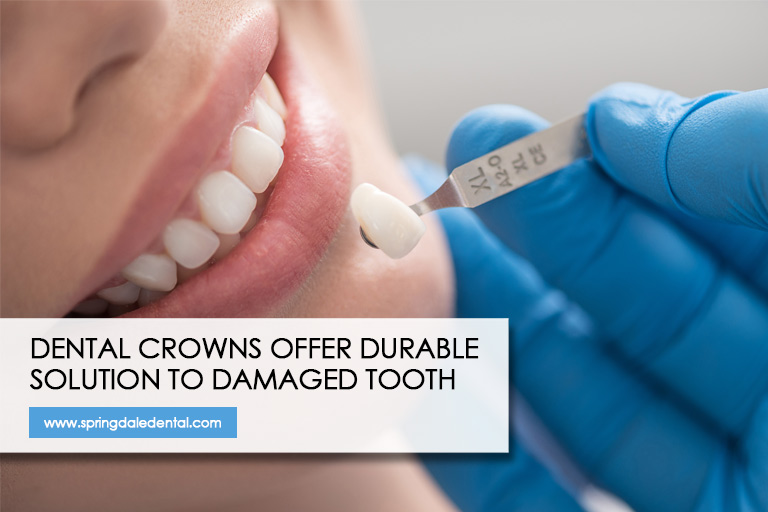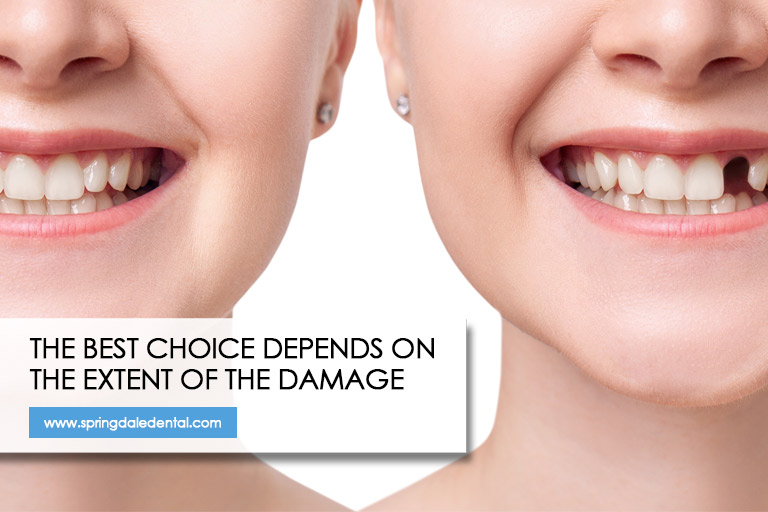A healthy, beautiful smile is an essential part of our overall well-being and confidence. When teeth become damaged due to decay, injury, or wear and tear, dental restorations are crucial to restore their function and appearance. Two common options for restoring damaged teeth are white fillings and dental crowns. This article aims to provide a clear comparison between these two restorative procedures to help you make informed decisions about your dental treatment.
White Fillings
White fillings, also known as composite resin fillings, are tooth-coloured materials used to fill cavities and repair minor tooth damage. They are made of a mixture of plastic and glass particles that bond directly to the tooth structure.
- Advantages
White fillings offer several advantages that make them a popular choice for many patients.
-
- Aesthetics: They blend seamlessly with the natural colour of your teeth, making them virtually invisible.
- Conservation of tooth structure: The placement of white fillings requires minimal removal of healthy tooth structure compared to other types of fillings.
- Versatility: A white filling can be used to fix a number of dental problems, such as worn teeth, chips, cracks, and cavities.
- Durability: With proper care, white fillings can last for several years.
- Biocompatibility: The materials used in white fillings are generally well-tolerated by the body and do not cause any adverse reactions.
- Potential Drawbacks
While white fillings are a great option for many dental restorations, it is important to be aware of their potential drawbacks.
-
- Staining: Over time, white fillings may become stained from coffee, tea, or other pigmented foods and beverages.
- Chipping or cracking: Although durable, white fillings can chip or crack under excessive biting force or trauma.
- Sensitivity: Some patients may experience temporary sensitivity to hot or cold temperatures after the placement of a white filling.
- Limited size: White fillings are best suited for small to moderate-sized restorations. Larger cavities may require a more extensive restoration, such as a dental crown.
- What They Can Be Used For
White fillings are a versatile restorative option suitable for a range of dental issues.
-
- Cavity fillings: White fillings are commonly used to fill cavities caused by tooth decay.
- Repairing chipped or cracked teeth: They can be used to restore the shape and function of teeth that have been chipped or cracked.
- Closing gaps between teeth: White fillings can be used to cosmetically close small gaps or spaces between teeth.
- Improving the shape of teeth: They can be used to reshape or contour teeth that are misshapen or uneven.
- Replacing old amalgam fillings: White fillings can be used to replace old, unsightly amalgam fillings.
Dental Crowns

A dental crown is a tooth-shaped cap that is placed over a damaged tooth to restore its shape, size, strength, and appearance. Crowns are typically made of porcelain, ceramic, or metal alloys.
- Advantages
Dental crowns offer several advantages that make them a reliable and long-lasting restorative option.
-
- Strength and durability: Crowns are very strong and durable, capable of withstanding significant biting forces.
- Natural appearance: Porcelain and ceramic crowns can be matched to the colour of your natural teeth, providing a seamless and aesthetically pleasing result.
- Protection: Crowns provide full coverage and protection for a damaged tooth, preventing further decay or fracture.
- Longevity: With proper care, dental crowns can last for many years, even decades.
- Versatility: Crowns can be used to restore teeth that are severely damaged, decayed, or weakened.
- Potential Drawbacks
Like any dental procedure, dental crowns also have some potential drawbacks to consider.
-
- Cost: Dental crowns are generally more expensive than white fillings.
- Tooth preparation: The placement of a crown requires significant removal of healthy tooth structure to accommodate the crown.
- Sensitivity: Some patients may experience temporary sensitivity to hot or cold temperatures after the placement of a crown.
- Potential for complications: In rare cases, complications such as nerve damage or crown loosening may occur.
- Two appointments: The placement of a dental crown typically requires two separate appointments.
- What They Can Be Used For
Dental crowns are used in a variety of situations to restore and protect damaged teeth.
-
- Severely decayed teeth: Crowns are often used to restore teeth that have extensive decay and cannot be adequately repaired with a filling.
- Root canal-treated teeth: After a root canal procedure, a crown is typically placed to protect the weakened tooth.
- Cracked or fractured teeth: Crowns can be used to hold together and strengthen teeth that have cracked or fractured.
- Dental bridges: Crowns are used as anchors for dental bridges to replace missing teeth.
- Cosmetic enhancements: Crowns can be used to improve the appearance of misshapen or discoloured teeth.
Making the Right Choice

The decision between a white filling and a dental crown depends on several factors, including the extent of the damage, the location of the tooth, aesthetic concerns, and budget.
- Extent of damage: If the damage is minimal, a white filling may be sufficient. However, if the tooth is severely decayed or weakened, a crown may be necessary to provide adequate strength and protection.
- Location of the tooth: The location of the tooth also plays a role in the decision-making process. Front teeth are more visible, so aesthetics may be a primary concern. In these cases, a white filling or a porcelain crown may be preferred. Back teeth are subjected to more biting force, so strength and durability may be more important, making a crown a better option.
- Aesthetic concerns: If aesthetics are a priority, white fillings and porcelain crowns offer a natural-looking solution.
- Budget: Dental crowns are generally more expensive than white fillings. However, it is important to consider the long-term benefits and durability of each option.
- Consultation with your dentist: The best way to determine the most suitable restorative option for your specific needs is to consult with your dentist. They will assess the condition of your teeth, discuss your concerns, and recommend the most appropriate treatment plan.
Both white fillings and dental crowns are valuable tools in restorative dentistry, each with its own advantages and drawbacks. The choice between the two depends on various factors, and a thorough discussion with your dentist is essential to determine the best course of action for your individual needs.
If you are considering dental restorations and would like to explore your options, we invite you to contact Springdale Dental Centre at (905) 458-1212. Our team of experienced dental professionals will be happy to answer your questions and help you achieve a healthy, beautiful smile.



